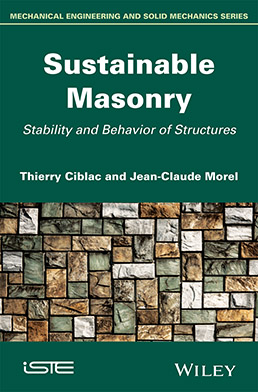
This book is the result of the meeting of two complementary approaches to the same subject: masonry. The first is the approach developed by Thierry Ciblac at the Ecole Nationale Supérieure d’Architecture de Paris la Villette (National School of Architecture of Paris La Villette, France), which revisits historical design methods using digital tools. The second consists of studies led by Jean-Claude Morel at the Ecole Nationale des Travaux Publics de l’Etat (National School of Civil Engineering, Lyon, France), which are based on experiments with masonry structures of earth materials. The convergence of these two approaches occurs through the common use of the theory of yield design.
This book introduces readers to and promotes understanding of the mechanical stability of masonry structures in a contemporary context. This approach will allow contractors to carry out diagnostics on existing heritage and to design new structures.
Part 1. Technologies and Construction Process
1. Introduction to Sustainable Masonry.
2. Earth and Stone Materials.
3. Blocks: The Elements of Masonry.
4. Arrangement of Blocks.
Part 2. Graphic Statics
5. The Foundations of Graphic Statics.
6. Reduction and Equilibrium of a System of Forces in a Plane.
7. Funicular Polygons.
8. Projective Properties and Duality.
Part 3.Yield Design Applied to Masonry
9. Principles of Yield Design.
10. Stability of Curvilinear Masonry.
11. Homogenization and Yield Design of Masonry.
Thierry Ciblac works at the National School of Architecture of Paris La Villette in France.
Jean-Claude Morel is currently Director of Research of the French Ministry of Sustainability. His research interests since 1996 include sustainable building with earth materials (earth and stone), energy in buildings and green buildings, and dry stone retaining walls (DSRW).